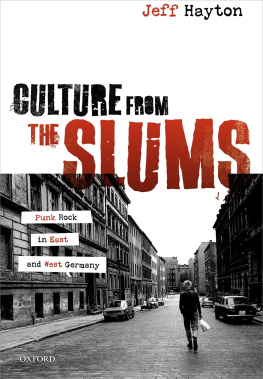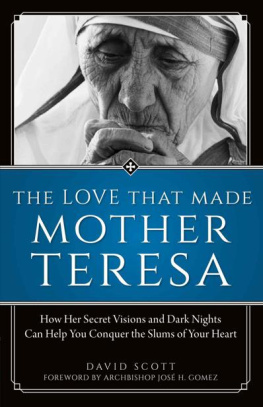CONTENTS
How the Other Half Lives
PENGUIN CLASSICS
HOW THE OTHER HALF LIVES
Jacob A. Riis (18491914) was the first reformer to effectively convey to a wide public the unacceptable nature of living conditions endured by the urban poor. His use of the relatively new medium of photography brought an unprecedented power to his message.
In 1870 Riis, born in Ribe, Denmark, arrived in New York as a Danish immigrant, one among thousands of the poor, friendless, and unskilled. Like so many, he frequently spent nights in police station lodging houses, the shelters of last resort in late nineteenth-century New York. He soon left the city to work at an assortment of rural jobs, but returned in 1877 to find steady employment as a police reporter for the Tribune (187788) and, later, the Evening Sun (188899). New Yorks police headquarters was then on Mulberry Street, in the heart of the Lower East Side slum district. As Riiss familiarity with the neighborhoods squalid living conditions deepened, he began to employ his journalistic skills to convey his revulsion to the public.
For ten years (187787) Riis wrote and lectured stressing his view that the poor were victims rather than makers of their fate, a concept then emerging among social reformers. However, despite his considerable rhetorical skills and instructional use of statistics, architectural plans, and maps, Riis was unable to communicate the elemental shock he felt on his nightly sorties through the worst slums. It was the 1887 invention of flash photography which allowed photographs to be taken in the darkest tenements that provided Riis with a powerful new resource. Initially employing amateur and professional photographers, and later on his own, Riis photographed the horrors of slum life specifically to shift prevailing public opinion from passive acceptance to a realization that such living conditions must be improved.
Armed with this visual evidence, Riis added magic lantern slide shows to his lectures. Local newspapers reported that his viewers moaned, shuddered, fainted, even talked to the photographs he projected, reacting to the slides not as images but as a virtual reality that transported the New York slum world directly into the lecture hall. Riiss predominantly middle-class audiences may never have experienced slum life, but they immediately understood it as a severe and intolerable threat to human dignity. But for Riis, even the verisimilitude of photography, made doubly powerful by the novelty of the medium, was not enough. At times he manipulated his subjects in an attempt to heighten the impact of his pictures. In some of his photographs, for example, young boys huddle over a ventilation grate as though it is their only refuge against the cold. But some of the boys can be seen smiling slyly at the camera. They know the picture is posed.
Once technical methods were developed for printing photographs with integrated text, Riis condensed his magic lantern shows into a series of half-tone photographic illustrations (together with line drawings) for his first book, How the Other Half Lives (1890). Its runaway success proved that he had captured the publics interest in the everyday life of the urban poor. Many publications followed in the wake of this path-breaking book, each incorporating the rapidly improving technology of photographic reproduction. As his reputation continued to grow nationally, Riis became a major influence in launching tenement housing reform, improving sanitary conditions, creating public parks and playgrounds, and documenting the need for more schools.
The thirty photographs reproduced in this Penguin Classics edition are drawn from The Jacob A. Riis Collection at the Museum of the City of New York. (Statement by Leslie Nolan, Curator, Prints & Photographs, reprinted courtesy of the Museum of the City of New York.)
Luc Sante was born in Verviers, Belgium, and emigrated to the United States as a child. He has lived in New York City since 1972. He is the author of Low Life: Lures and Snares of Old New York (1991), Evidence (1992), and The Factory of Facts (1998). He has also worked as a book, film, art, and photography critic for many publications.
HOW THE OTHER HALF LIVES
Studies Among the Tenements
of New York
JACOB A. RIIS
WITH AN INTRODUCTION AND NOTES BY
LUC SANTE

LIST OF ILLUSTRATIONS
P HOTOGRAPHS
All photographs are part of the Jacob A. Riis Collection of the Museum of the City of New York. The Collections catalog numbers appear in parentheses following the captions.
I LLUSTRATIONS
INTRODUCTION
1
How the Other Half Lives is one of those unusual books that changed history in a material way, directly affecting the lives of millions of people. Jacob Riis wrote it for no other purpose than to call attention to the horrendous living conditions of the poor in New York City, and to insist on reform. It had an immediate impact, selling out numerous printings and being hailed in the press and preached from the pulpit, and the reforms it recommended were largely undertaken, albeit gradually.
Riis begins his most famous work with a brief historical overview: tenements were initially single-family dwellings, cut up into apartments to accommodate the masses, and by and by speculators began building them from scratch, using cheap materials and employing shortcuts in every aspect of construction, making houses that were unsafe, unhealthy, and uncomfortable even when new. He then takes the reader on a tour of the downtown slums, taking on a guides voice Be a little careful, please! The hall is dark and you might stumble over the children pitching pennies back there that echoes the one employed by Charles Dickens on similar excursions in his American Notes (1842) and subsequently exploited by numerous anonymous authors of pamphlets who described the slums for the titillation of middle-class readers.
Then Riis displays the citys numerous and varyingly shadowy ethnic groups: the Italians, the Jews, the Bohemians (Czechs and Slovaks), the blacks, the Chinese. He does not spare the reader his opinion of the habits and practices of these groups, some of which, while time-honored, are barely comprehensible to the Danish-born author. He goes on to describe the plight of the citys poor children, many of them homeless, having been cast out by families no longer able to support them. He writes of the disastrous effects of alcohol, alludes circumspectly to the opportunity and danger that prostitution presents to poor girls, deplores mendicants and others dependent on charity. Then he briefly outlines the work of reform groups and private charities, and lauds those few builders who have invested in the planning and erection of model tenements, solid and sanitary. He is a moralist, but one grounded in daily reality, who believes that cleanliness is quite literally next to godliness, or at least an absolute prerequisite for it. Sunlight, air, and the eradication of filth are for him the agents that will drive out crime, disease, illiteracy, inertia, and despair. He concludes with an appendix of sobering and inarguable statistics. That the density of population in the Lower East Sides Thirteenth Ward was nearly ten times greater than for the city as a whole speaks volumes all on its own. To be sure, such facts were available elsewhere to interested parties at the time Riis wrote, but he had to make his readers interested. The books immediate mission was to take on the willed ignorance of the middle and upper classes, who knew that there was human misery in their city but preferred to believe that it was deserved, perhaps even chosen, by its victims.







